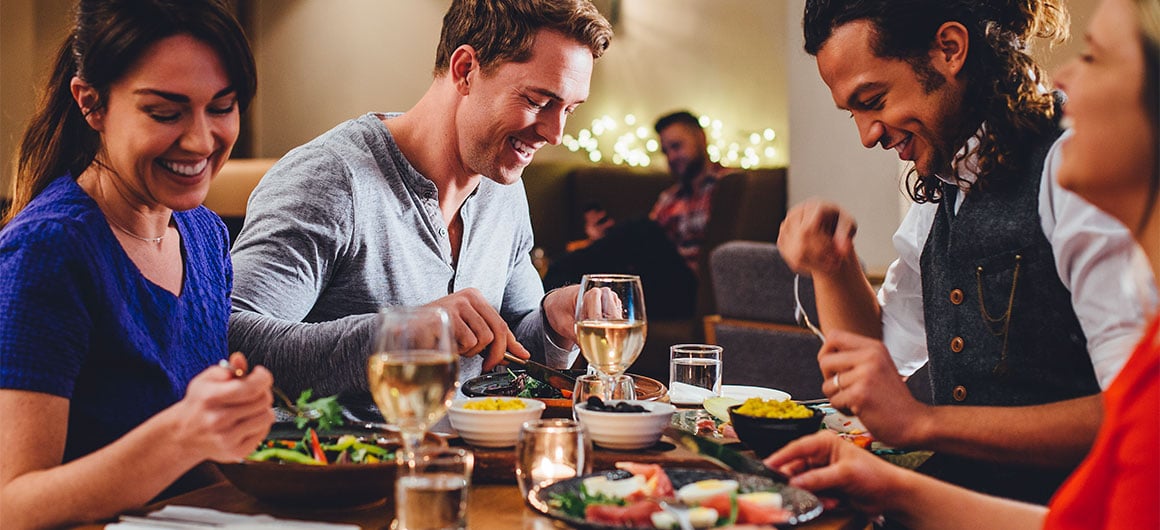
Fans of Downtown Abbey, Bridgerton and any movie or TV series based on a Jane Austen novel undoubtedly notice the characters’ good manners, particularly at the table. While most people no longer dress for dinner, certain customs such as good table manners have carried over into the 21st century. Knowing basic etiquette will increase your comfort level while dining with strangers, colleagues, or anyone you wish to impress.
“Dining etiquette is about making the experience comfortable for everyone at the table, not just about following rules,” says Jamila Musayeva, an etiquette coach, author of several etiquette books, and host of an etiquette YouTube Channel (www.youtube.com/c/JamilaMusayeva) with more than a million subscribers. Some traditions have practical roots, she adds, while others help create a refined atmosphere.
Here’s what to know to mastering the basics of dining etiquette.
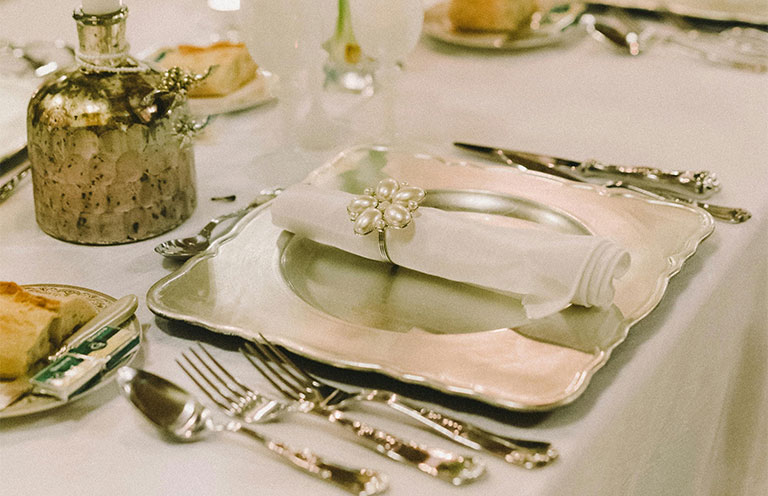
Outside to inside
Arrange the cutlery in the order you should use it. Forks should be placed to the left of the plate, with the salad fork first, followed by the entrée fork. Knives go to the right of the plate, with the blade facing the plate. If soup is on the menu, the soup spoon is on the outside, to the right of the knives, says JustAnswer Etiquette Expert August Abbott, who taught etiquette classes for 40 years. Dessert cutlery is on the table at the top of the plate.
On a formal table, the water glass goes above the knife on the upper right of the plate. Place the wine glass to the right of it. (The modern table usually has one wine glass, particularly in a restaurant setting, notes Musayeva, and servers will generally bring new cutlery with each course.) But at wine dinners and weddings, you may encounter the traditional table setting; everything you will need—from salad fork to sherry glass—is preset.
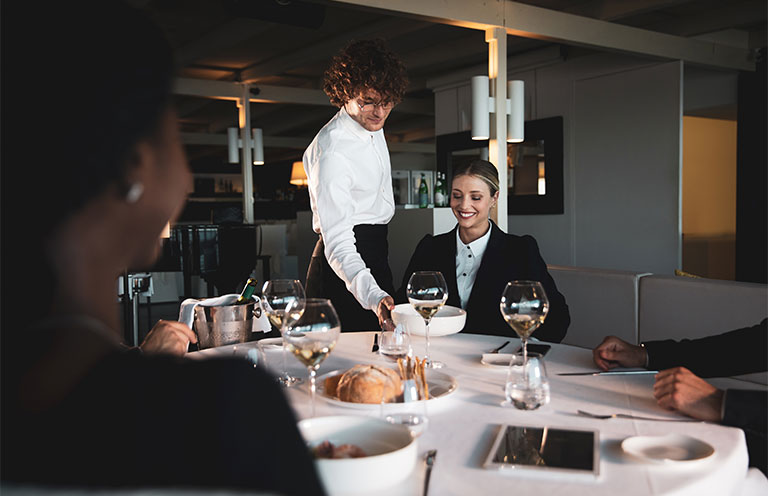
Server signals
You do more than eat with cutlery; you also use it to inform servers. “If you pause but plan to continue, rest your knife and fork on your plate in an open V shape,” Musayeva says. “If you are done, place them parallel on the plate, usually at the 10 and 4 o’clock positions.”
The fork tines face inward, toward the center, and the knife blade faces inward.
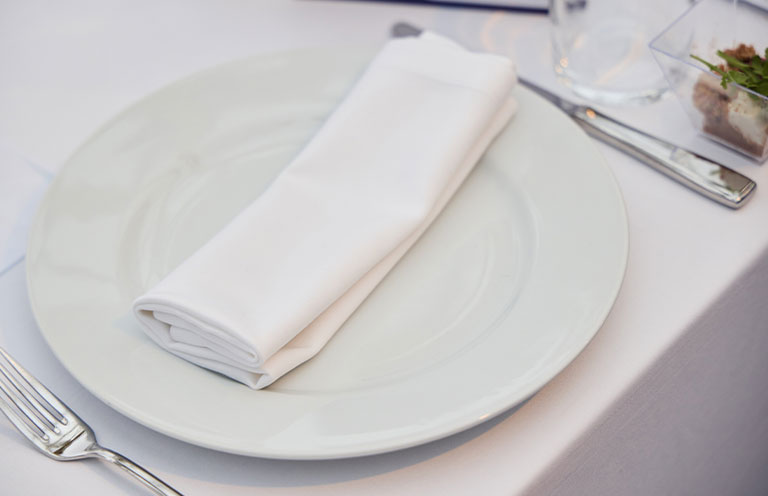
Napkin know-how
First and foremost, the napkin goes on your lap—not tucked into your collar, Musayeva says. Unfold it when food arrives.
What if the food has arrived before you arrive at the table?
“If upon being seated, there is already food on the table, the napkin goes on the lap right away,” Abbott says.
Placing the napkin on your lap is a good time to put your phone away, says Lisa Mirza Grotts, an etiquette professional and the former director of protocol for the city and county of San Francisco. And never use your napkin as a tissue.
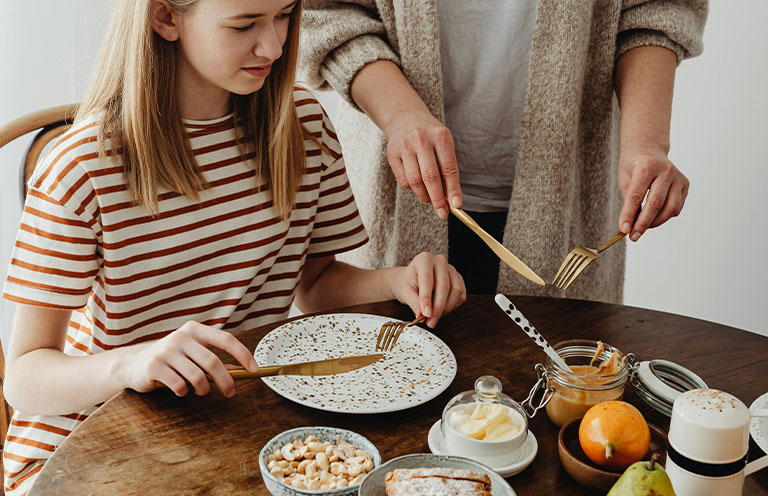
Eating with ease
Sipping soup requires finesse, especially if you want to avoid eye rolls from your dinner companions. Don’t blow on hot soup, and never slurp it, Abbott says. Spooning the liquid away from you will prevent spills. When you’re down to the last drops, tilt the bowl away from you—in the same direction that you moved the spoon—to get the rest, she says. “It is also appropriate to leave this bit of soup in the bowl.”
To eat the bread, tear off a bite-size piece, butter only, and eat the entire piece. “Pass the bread to the right, but never pass up the opportunity to show good manners,” Grotts says.
The bite-size rule also applies to a protein that requires cutting or slicing. Think steak, fish, and chicken. Cut only one piece of meat at a time; don’t “pre-cut” several pieces. This way, you slow the pace of the meal so that you can savor the food (including keeping the meat warm by preventing heat to escape more quickly with each cut) as well as the company.
When it comes to dinner conversation, eating small pieces means you can pause between bites to talk. If you are caught with a full mouth, hold up a hand, chew, and, after swallowing, apologize, and then answer the question, Abbott recommends.
As Grotts puts it: “Dining etiquette is about making those around you feel at ease, not on edge.”
